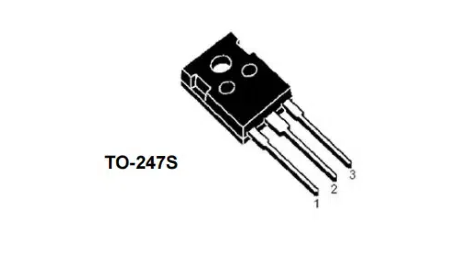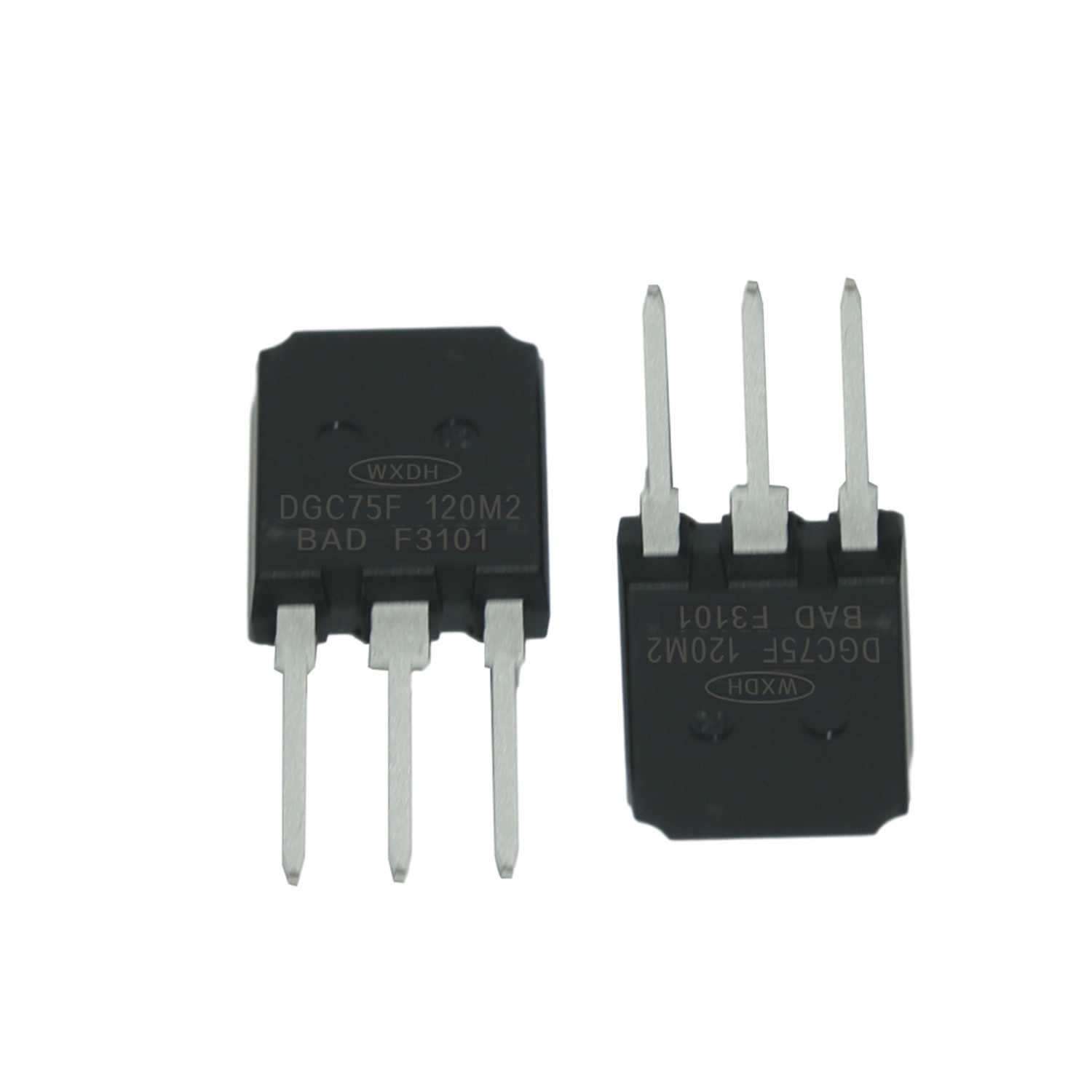
When it comes to modern electronics, two terms often come up in circuit design and power management: CMOS and MOSFET. While they may sound similar, they serve different purposes and are used in different parts of electronic systems. If you're in the field of electronic engineering, embedded system design, or even just curious about what powers your power tools or electric vehicles, understanding the difference between CMOS and MOSFET is essential.
This in-depth guide will help you clearly understand the distinctions between CMOS and MOSFET, how they are used, and where MOSFETs truly shine—especially in high-power applications like inverters, EV systems, and more.
We’ll also explore advanced technologies like enhancement mode MOSFET, trench MOSFET, and how companies like Jiangsu Donghai Semiconductor Co., Ltd. are developing high-performance MOSFET solutions for industrial, consumer, and automotive needs.
What Is a MOSFET?
A MOSFET (Metal-Oxide-Semiconductor Field-Effect Transistor) is a type of transistor used primarily for switching and amplifying electronic signals. It’s one of the most important building blocks in modern electronics due to its efficiency, reliability, and scalability. You’ll find MOSFETs in everything from cell phones to solar inverters, power tools, and electric vehicles.
There are various types of MOSFET, including:
What Is CMOS?
CMOS stands for Complementary Metal-Oxide-Semiconductor. It’s actually a technology used to construct integrated circuits, particularly those found in microprocessors, sensors, and digital logic circuits. CMOS technology uses a combination of both P-type and N-type MOSFETs to create logic gates and memory cells with very low power consumption.
So while a MOSFET is an individual component, CMOS refers to a system or circuit design that uses MOSFETs.
CMOS vs MOSFET: Key Differences
| Feature | CMOS | MOSFET |
| Definition | Integrated circuit design using MOSFETs | A semiconductor device used for switching |
| Usage | Logic circuits, CPUs, sensors | Power conversion, switching, amplification |
| Power Consumption | Very low in idle mode | Depends on type and application |
| Structure | Uses both N and P channel MOSFETs | N-channel or P-channel individually |
| Application Focus | Digital systems | Analog and power systems |
| Example Products | CMOS image sensors, microprocessors | Trench MOSFET, enhancement mode MOSFET |
In simple terms, MOSFET is a building block, and CMOS is one way of using those building blocks to create complex digital systems.

Why MOSFETs Are Crucial in Power Electronics
In today’s world of electrification, MOSFETs are the go-to components for high-speed switching and power conversion. Whether in industrial automation, electric vehicles, or power tools, they help manage power efficiently and minimize energy loss.
Jiangsu Donghai Semiconductor Co., Ltd., a leader in power semiconductor devices, provides high-quality MOSFET products tailored for applications such as:
Understanding Enhancement Mode MOSFET
An enhancement mode MOSFET is normally off when no voltage is applied to the gate. It requires a positive gate voltage (for N-channel) to turn on and allow current to flow from drain to source. This makes it ideal for digital switching and power control applications where you want the circuit to remain off until activated.
Enhancement mode devices are the most commonly used types of MOSFET in modern electronics due to their simplicity and efficiency.
Applications of Enhancement Mode MOSFET:
What Makes Trench MOSFETs So Popular?
A trench MOSFET uses a vertical structure where the gate is embedded in a trench in the silicon substrate. This design significantly reduces the on-resistance (Rds(on)) and improves current handling capability. As a result, trench MOSFETs are ideal for high-efficiency power applications such as:
Donghai Semiconductor offers advanced trench MOSFET solutions that provide low losses, high current capacity, and compact packaging options like TO-220, TO-247, and QFN.
Power Tools and MOSFET Integration
Power tools such as drills, saws, and impact drivers require fast and reliable power switching. MOSFETs are integrated into their motor drive circuits to achieve:
Donghai’s MOSFET products are optimized for such applications, ensuring durability and efficiency in demanding environments. Whether it's a handheld cordless tool or a high-torque industrial machine, MOSFETs play a vital role in performance.
MOSFET vs Transistor: Are They the Same?
One common question is the comparison of MOSFET vs transistor. Technically, a MOSFET is a type of transistor. However, not all transistors are MOSFETs.
| Parameter | Bipolar Junction Transistor (BJT) | MOSFET |
| Current Control | Current-controlled | Voltage-controlled |
| Switching Speed | Moderate | Very High |
| Power Efficiency | Lower | Higher |
| Thermal Stability | Lower | Better |
| Application | Analog circuits | Power management & switching |
For applications that require fast switching and low power loss—such as power tools, battery systems, and inverters—MOSFETs are generally superior.
Trends: The Future of MOSFET Technology
As industries demand more efficient and compact power solutions, MOSFET technology continues to evolve. Here are a few key trends:
Growth in enhancement mode MOSFET adoption for EVs and renewable energy
Increased use of trench MOSFETs in high-frequency applications
Integration of MOSFETs into AI-powered energy systems
Wide-bandgap semiconductors like SiC and GaN complementing traditional MOSFETs
More compact packaging for use in portable power tools
Companies like Jiangsu Donghai Semiconductor are investing in R&D to stay ahead of these trends. With over 20 years of technical experience and an annual production capacity of 500 million devices, Donghai is a trusted partner in the global semiconductor supply chain.
Why Choose Donghai MOSFETs?
Here’s what sets Jiangsu Donghai Semiconductor apart:
Certified national high-tech enterprise
4 advanced laboratories for device testing and failure analysis
Over 60 engineers specializing in power device R&D
Specialization in enhancement mode MOSFET, trench MOSFET, and IGBT modules
Application coverage across consumer electronics, industrial controls, power tools, EVs, and 5G infrastructure
Their MOSFET portfolio includes packages like TO-252, TO-263, TO-220, TO-247, and QFN, making integration into diverse systems simple and efficient.
FAQs
A1: What is the main difference between CMOS and MOSFET?
Q1: A MOSFET is an individual component used to control current flow, while CMOS is a technology that uses both N-channel and P-channel MOSFETs to build integrated circuits.
A2: Where are enhancement mode MOSFETs most commonly used?
Q2: They are widely used in switching circuits found in inverters, power supplies, electric vehicles, and cordless power tools.
A3: What benefits do trench MOSFETs offer?
Q3: Trench MOSFETs provide lower on-resistance and better efficiency, making them ideal for high-power and high-frequency applications.
A4: How does a MOSFET differ from a regular transistor?
Q4: A MOSFET is voltage-controlled and offers faster switching with better efficiency compared to current-controlled bipolar transistors.
A5: Can I use Donghai MOSFETs in industrial applications?
Q5: Absolutely. Donghai's MOSFET line is engineered for reliability, efficiency, and high performance in various sectors including automotive, industrial automation, and power tools.
While CMOS and MOSFET may appear similar, they serve distinct roles in electronics. CMOS is a circuit design technology using MOSFETs, while a MOSFET is a standalone component critical to power control and switching.
As the demand for efficient power solutions grows—especially in sectors like power tools, EVs, renewable energy, and smart appliances—MOSFETs will continue to play a central role. Technologies like enhancement mode MOSFET and trench MOSFET are pushing the limits of what's possible in compact, high-efficiency designs.
If you're in need of reliable, high-performance MOSFETs for your next project, consider the advanced solutions from Jiangsu Donghai Semiconductor. With a strong commitment to quality, innovation, and global standards, Donghai is driving the future of power electronics.




















